Understanding of Brand Activation Is Great For Business Strategy

As a brand, it is important to understand the importance of brand activation campaigns. In a competitive market, it plays a vital role in physically placing your business or brand within its audience.
What is brand activation?
Brand activation is a marketing discipline that deals with driving consumer action through shared interactions and experiences. It forms part of an overall marketing approach, or what is so-called marketing mix.
A marketing mix consists of factors controlled by a brand to influence consumer purchasing decisions. In modern marketing terms, these factors are identified as the 7Ps, not elaborated on here so as to keep our focus on brand activation.
The marketing mix comprises of product, people, place, promotion, process, price and physical environment. These are decisive pillars in accordance with consumer engagement with the brand.
The influence of brand activation
For me, brand activation is an integral part of brand involvement with its prospective market. This is through physical and experiential activities aimed at encouraging positive brand participation. Therefore, bringing a brand or product to life, be it in-store or across multiple touchpoints. For example, these could include an integration of aspects of marketing, PR and advertising.
The purpose & Developing a Brand activation
The purpose of brand activations is to build or initiate consumer relationships by seeking to establish opportunities to educate them about your brand, therefore, expressing values that will allow effective market competitiveness. Although campaigns can achieve outstanding results, it is mandatory for the brand to align with a well-developed strategy which stems from a well-defined Dara-led analysis. In addition, for brand activation to work effectively, it must be part of a larger marketing strategy with efficient planning.
A successfully composed campaign carries a combination of elements that stem from great insight, creative concepts, good promotional support, sufficient budget and time well spent in the market.
Source: from David
- Published in marketing
The Influence of The Integrated Marketing Communication on The Consumer Buying Behaviour
Today it is necessary that organizations to understand why the integrated marketing communication programs have become so important in their activity, especially after 1990. Traditional components of the marketing mix – the product, price, placement (distribution) – are not longer as efficiently as they were in the past. When the market passed through a slow period of development, these proved to be particularly useful in the work of any organization. But today, the elements of the traditional marketing mix have lost of their value as “weapons” competitive. Thus that many ways to obtaining a product can be copied by competitors in a very short period of time. The experience the organizations in provide value of the products, in a traditional way, is replaced today with the design and manufacture their assisted of computer or robotics. Also, any form of distribution can be easily reproduced competition. Efficiency of organizations was supported price to the point in which and this became an advantage in decline. In a parity market, the only way by which organizations may be differentiated is communication.
The marketing communication can provide a real sustainable competitive advantage to any organization that leverages its potential. In an economy with a highly competitive, organizations must capitalize the integrated marketing communication in the most effective way, to ensure the creation and maintenance of long-term relationships with current and potential customers. Through integrated approach to marketing communication, companies “talk to with one voice” and the impact of messages sent is one maximum.
Research Methodology
- Analyse the relationship between integrated marketing communication and consumer behaviour.
- Determining those factors that may influence buying behaviour of consumers through the integrated marketing communication.
- Identify tools used for the collection, processing and analysis of the findings obtained from research, as follows: a) were selected and analysed a number of scientific articles published in the most known international databases; b) were consulted titles of books published in the domain of research theme; c) were identified items of interest that contributed to achieving the research objectives above-mentioned.
- Interpretation of obtained theoretical results that contribute to the fulfilment of the main research objectives are presented further.
Source: Oancea Olimpia Elena Mihaelaa
- Published in marketing
Making Customer Segmentation Deliver
As the ability to gather sophisticated data grows, here’s a four-step process for making segmentation drive improved performance.
BY COREY YULINSKY
Click here: Making Customer Segmentation Deliver
- Published in marketing

 English
English  Tiếng Việt
Tiếng Việt 